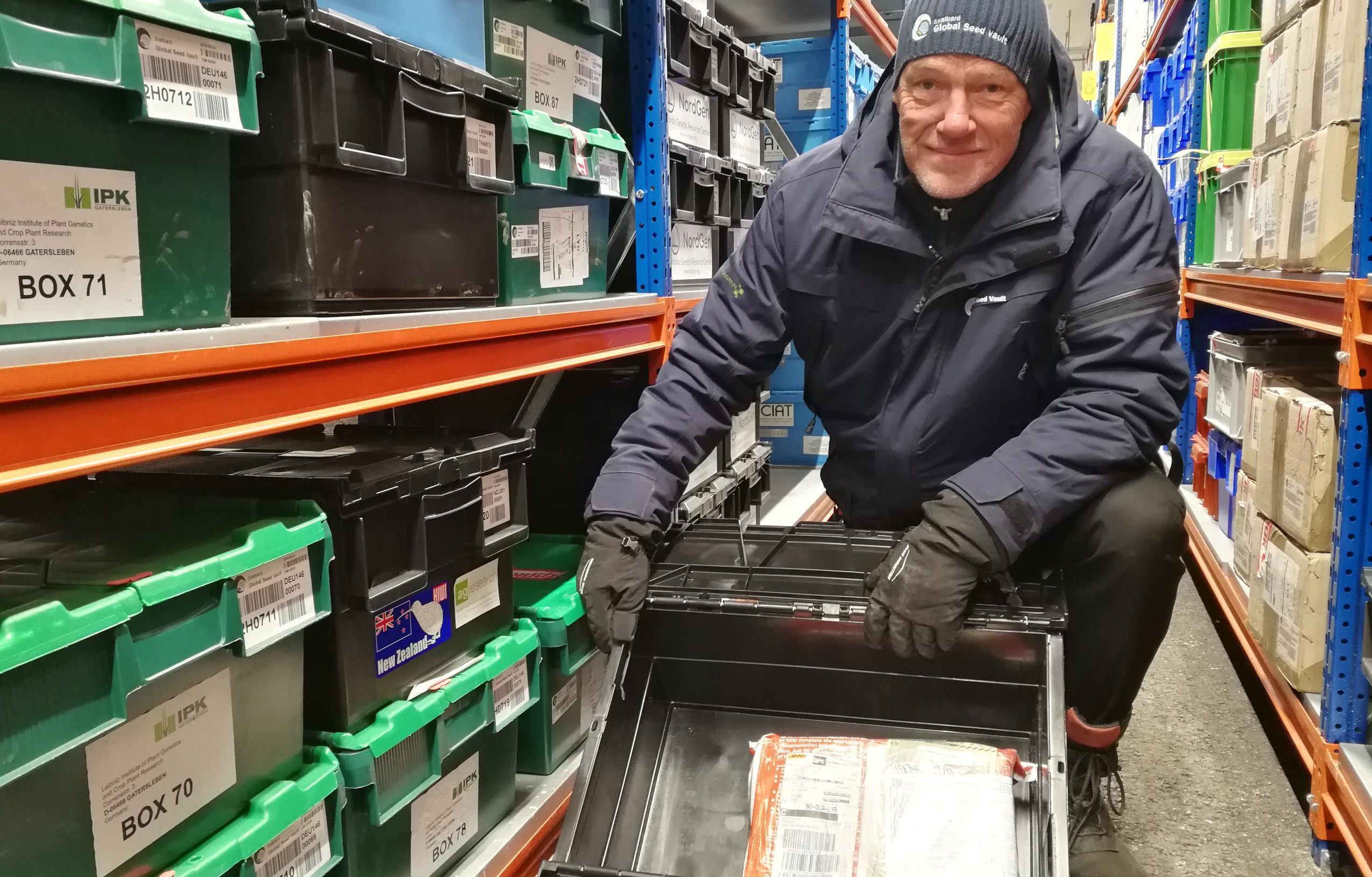

On the North Island of New Zeeland, the sun is setting outside Kioumars Ghamkhar’s office. He has been the Director of the national gene bank Margot Forde Forage Germplasm Centre since 2015 and works with a small but dedicated team to conserve and put the forage collection of 140 000 accessions into use.
“We try to be a dynamic centre instead of a static seed storage. That’s why we work closely with the plant breeding companies here and provide them with germplasm but also get involved in their research. We have very good examples of our cooperation. For example, when it comes to red clover, we screened a broadly diverse germplasm and found promising traits which later was developed to good cultivars by the seed companies and AgResearch”, he says.
Ghamkhar describes how important forages are for New Zeeland. Each year they contribute seven billion dollars to the country’s economy. They are more important income sources than apples, kiwis and cereals. Only pine trees can compete with forages, when it comes to contributing to the economy.
Important backup
Margot Forde Germplasm Centre has sent between 250 – 1 000 seed samples to Svalbard each year since 2015. They started with important forages for New Zeeland, such as ryegrass. Later, they sent species that could be important for the whole world. For example, legumes that can’t be cultivated in New Zeeland today, but may be important in a future with climate change.

“This time, we send a combination of species. The boxes deposited on the shelves of the Seed Vault now contain ryegrass, clover but also wild relatives of species as they could hold important traits needed in the future”, Ghamkhar says.
The Margot Forde Germplasm Centre plans to back up at least 10% of their 140 000 accessions in Svalbard. Today, they have secured about 2% of their collection. For Ghamkhar, working with Svalbard Global Seed Vault was self-evident.
“If you’re wise, you want to have a backup of your seed collection somewhere – because anything can happen, anytime. Here, in New Zeeland, earth quake is a major risk but also a simple fire can threaten gene banks. Just look at what happened in Syria” where war broke out of nowhere.
Ghamkhar lists the advantages of Svalbard Global Seed Vault; it’s in a geologically and geographically stable place, it’s a free service and it’s used as a backup storage place by the entire world.
“And I love it’s Swiss banking system model. We put our germplasm there, and no one else than us can touch it – it’s ours. It belongs to the people of New Zeeland. It would be crazy not to use the great service of the Seed Vault” he says.
Warmer summers already
Another threat to New Zeeland, and the rest of the world, is climate change. In 2080, models indicate that the mean temperature will be up to 4 degrees higher on the east coast of New Zealand’s both islands.
“During the past five years, we have already seen these change patterns. In the east coast, each summer we have seen warmer temperatures than the year before in the past few years. It’s already happening, and we have to be prepared. The gene banks have the mission to do know their material as best as they can these days, but they also have to keep updated on the climate modelling for the countries they are based in and look into what kind of species in their collections will tolerate the climate of the future”
Publicly available seeds
The seeds at Margot Ford Germplasm Centre are publicly available, which also is a condition for being able to deposit seeds in the Seed Vault. This means that an important part of the work done by Kioumars Ghamkhar and his colleagues is to encourage researchers, plant breeders and other stakeholders to order and make use of their seed collection.
“We deliver as much seeds as we can. And if we have too few seeds of one species, we ask the user who asked for these specific seeds to wait for seed increase and we’ll try to multiplicate them. Unfortunately, we are – as all other gene banks –underfunded. But hopefully this will change in 2020 when we will try to link the centre to other projects, enabling us to work even more efficiently.”
As Ghamkhar finishes the sentence, it’s entirely dark outside his office window. It’s time to go home. Tomorrow, the hard work at the Margot Forde Forage Germplasm Centre continues.
